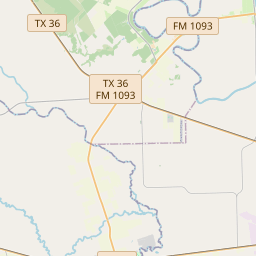Lissie United Methodist Church
Historical marker location:






Organized in 1906 as the Evangelical Association, this congregation began with nineteen charter members. The Rev. George W. Causey served as first pastor. A sanctuary and parsonage were dedicated in 1907. After a division within the association, the two factions reunited in 1922 as the Evangelical United Brethren Church in 1946, and as Lissie United Methodist Church in 1968. The church continues to serve the people of Lissie and the surrounding community
As one of the most visible programs of the Texas Historical Commission (THC), historical markers commemorate diverse topics in Texas history, including: the history and architecture of houses, commercial and public buildings, religious congregations, and military sites; events that changed the course of local and state history; and individuals who have made lasting contributions to the state, community organizations, and businesses.
Texas has been a major oil-producing state for over a century. The first big oil discovery in Texas was the Spindletop field near Beaumont in 1901, which set off a massive oil boom that transformed the state's economy and made Texas one of the wealthiest states in the country.
In 1846, the Texas legislature established Wharton County, named after brothers William Harris Wharton and John Austin Wharton, who were prominent figures in the Texas Revolution. The county was officially organized in 1848, with the town of Wharton selected as the county seat. The growth of the county was fueled by the development of the railroads, which provided transportation for agricultural products such as cotton, corn, and cattle.
During the Civil War, Wharton County was heavily affected by the conflict. Many of the county's residents supported the Confederacy, with several military units being raised in the area. However, the county also had a significant number of Union sympathizers, leading to tensions and conflicts within the community. After the war, the county gradually recovered and experienced economic growth, with new industries such as oil and gas exploration contributing to its prosperity.
Today, Wharton County is a diverse community with a strong agricultural base. The county is known for its rice and cattle production, as well as its oil and gas industries. It is also home to several historical sites, including the Wharton County Courthouse, which was built in 1889 and is listed on the National Register of Historic Places. With its rich history and thriving economy, Wharton County continues to be an important part of Texas's cultural and economic landscape.
Wharton County Timeline
This timeline provides a condensed summary of the historical journey of Wharton County, Texas.
- 1846: Wharton County is established by the Texas legislature
- 1848: The first settlements are established in the county
- 1849: The town of Wharton is founded and becomes the county seat
- 1850: The population of the county is 1,075
- 1861-1865: Wharton County residents participate in the American Civil War
- 1881: The Gulf, Colorado and Santa Fe Railway reaches Wharton County
- 1900: The Galveston hurricane devastates the county, causing widespread destruction
- 1930: The county's population reaches its peak at 39,195
- 1965: The construction of the Wharton County Junior College is completed
- 1985: The county courthouse is added to the National Register of Historic Places